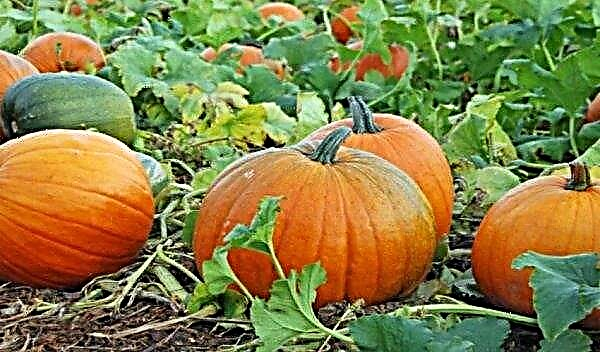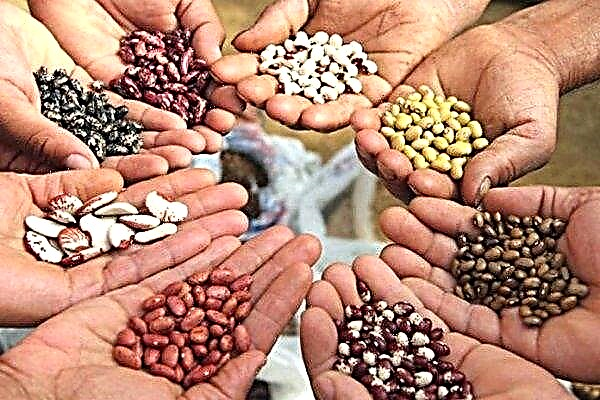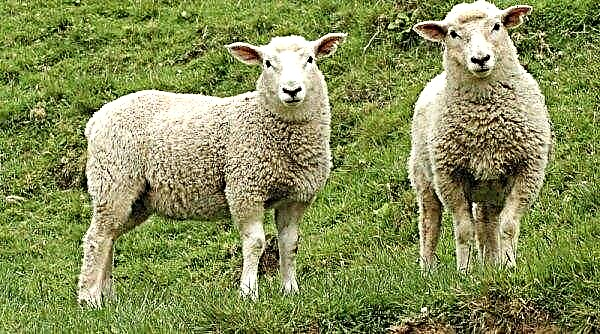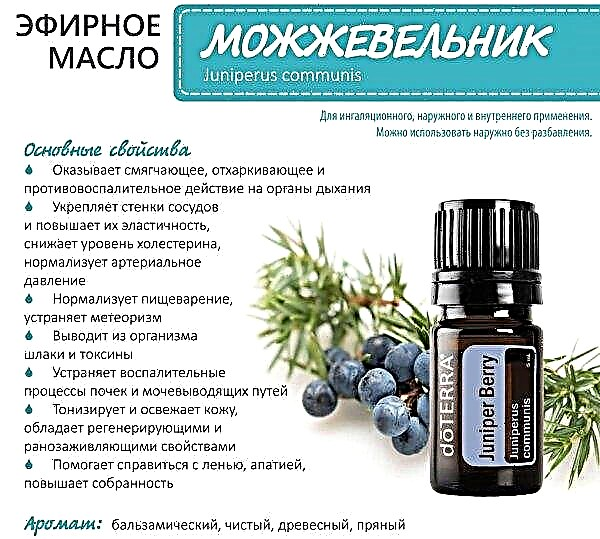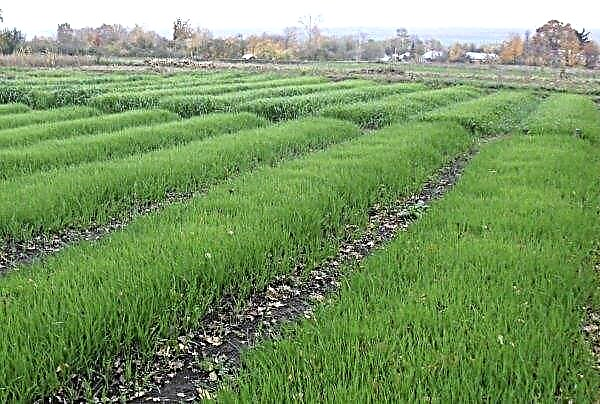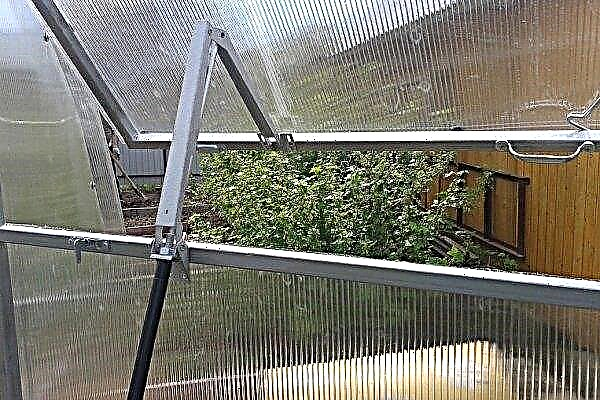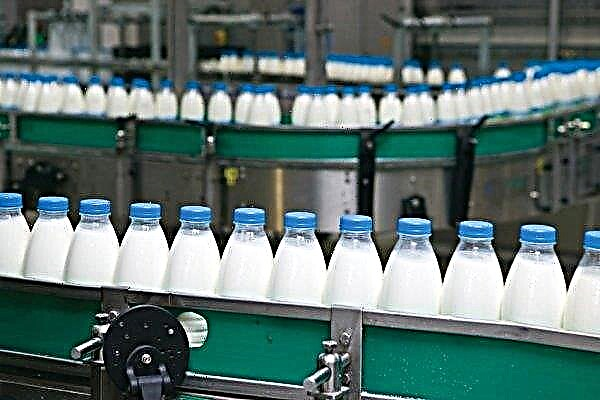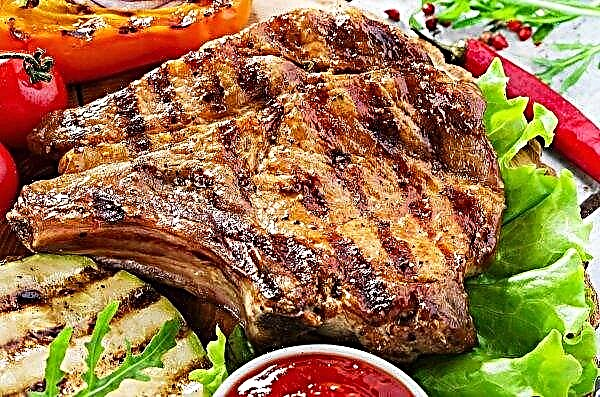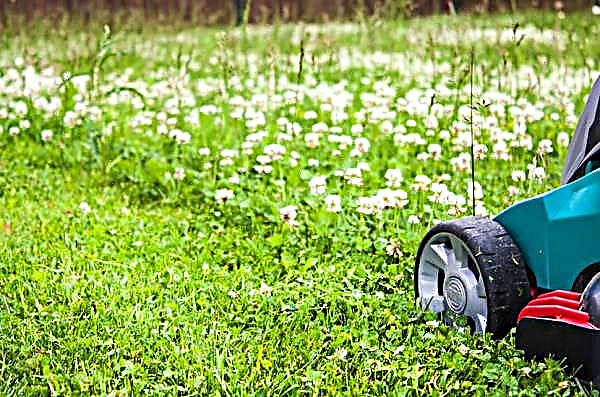The issue of egg laying of domestic chickens in winter often arises in poultry farmers. There are many reasons for the decline in productivity. How to make chickens rush in the winter every day and organize favorable conditions for keeping and feeding in the cold period is discussed in the article below.
Why chickens stopped rushing: the main reasons
By autumn, the number of eggs that bring layers is significantly reduced. The following factors influence the decrease in egg production or its complete absence:
- norms and composition of feed;
- living conditions of chickens;
- diseases and physiological abnormalities;
- livestock age;
- physiological characteristics of the breed of chickens;
- change in feed composition;
- excitement and stress.
Important! High-calorie nutrition and excess feed lead to obesity in chickens. They move a little and stop rushing.
Lack of nutrients
The most important factor in ensuring egg laying of chickens is a balanced and nutritious diet. Lack of certain elements or vitamins can lead to a decrease or complete lack of productivity. 60–70% of laying hens should consist of cereal grains. A variety of feeds and a full combination of useful components (proteins, fats, carbohydrates and vitamins) contribute to an increase in egg production.
The source of protein in the winter in the diet of chickens are:
- cereal grain (wheat, corn, millet, oats, barley);
- legumes (peas);
- meat, bone and fish meal;
- dairy products (cottage cheese, whey, milk);
- cake and meal (soy, flax, sunflower, rape);
- vegetables in small quantities.
- cereals (especially corn);
- legumes (peas);
- root crops (pumpkin, potatoes, beets, carrots);
- flour mixtures and flour milling.
Important! Do not give chickens food sweet, salty, sour foods, baked goods, hard crusts of watermelon, fish oil (causes an unpleasant smell of eggs).
- corn;
- oats;
- sunflower;
- pumpkin.
- hay grass grass;
- needles;
- fodder yeast;
- ready-made vitamin supplements.

Shell formation is provided by products containing calcium and phosphorus in sufficient quantities:
- feed chalk;
- shell rock;
- limestone;
- crushed bones;
- crushed eggshell.
Cope with the processing of feed, and thereby small pebbles or gravel will help improve digestion. Salt is necessary for chickens - it increases appetite, replenishes the body with sodium and chlorine. There should always be clean, warm water in the drinkers. With a lack of water, productivity decreases, and eggs are small. Feeding rates should be sufficient to exclude a shortage and a fight for food. A sharp transition to another type of feed can also cause the absence of eggs.
Did you know? Chicken egg protein is considered the standard. All other protein compounds are compared and evaluated against egg white.
Feed Requirements:
- high-quality feed, not expired;
- grain ripened and not pickled,
- free of impurities and dust,
- without signs of fungus and mold.

Molting
If there is a sufficient amount of feed, favorable conditions of detention, the reason for the absence of eggs can be a period of natural change of feathers, or molting. Usually this period occurs at the end of autumn, the beginning of winter and lasts 2 months. In order to facilitate the energy consumption of laying hens during molting, it is advisable to add sulfur-containing products to normal feed, namely:
- cabbage;
- alfalfa;
- peas;
- bone meal.
Whole grains are excluded at the beginning of molting to reduce egg production and speed up the molting process. When a new plumage appears, the grain norm in the feed is increased.
Violation of the conditions of detention
To ensure egg production, it is necessary to create a favorable temperature regime and sufficient illumination of the house. In winter, with reduced daylight hours and cooling, the productivity of chickens naturally decreases. Chicken is a bird of daylight hours (12 hours in the summer months), that is, it falls asleep at sunset and wakes up at dawn. In low light conditions, the house must be provided with artificial lighting to meet daily light standards. The optimum comfortable temperature for laying hens in the chicken coop is + 15 ... 25 ° С. In violation of the temperature and light conditions, the hens move little, are less active, which affects the formation of eggs. Compliance with sanitary hygiene in the house provides for timely cleaning and disinfection, regular ventilation, and the absence of drafts. Each bird should have a convenient place for a nest and freedom of movement.
In violation of the temperature and light conditions, the hens move little, are less active, which affects the formation of eggs. Compliance with sanitary hygiene in the house provides for timely cleaning and disinfection, regular ventilation, and the absence of drafts. Each bird should have a convenient place for a nest and freedom of movement.
Important! In a quantitative ratio of 10-12 chickens, 1 rooster is needed. Excessive and aggressive roosters are recommended to be sent to a separate paddock.
Effects of stress
The presence of stress in chickens is another factor in reducing the number of laid eggs. The reasons for the unrest of layers can be:
- lack of food;
- introduction of new feed or lack of water;
- cramped and poor microclimate of the chicken coop;
- noise;
- the appearance of new birds (chickens and roosters);
- new premises;
- attack of predators (rats, foxes, raccoons, weasels)
- superfluous and aggressive cocks.
Laying hens matter in egg production and the ability to hatch masonry.
Age effect
The intensity of oviposition depends on the age of the livestock. The most productive is the first year for laying hens with a peak at week 27–28. When reaching the age of 48-50 weeks, productivity decreases, and by 2-3 years it may stop. The autumn period, hens are chosen as a rest from laying eggs.
Disease
Chickens resist disease well, but cold, poor nutrition, and inadequate care can lead to winter illnesses and cause fewer eggs.
Important! To prevent frostbite, you should not let birds out on frosty and windy days. You can grease combs and catkins with any edible fat or petroleum jelly.
Subcooling causes:
- colds and flu;
- infectious laryngotracheitis;
- bronchopneumonia;
- inflammation of the oviduct and ovaries;
- frostbite and injuries.
Poor nutrition causes:
- avitaminosis;
- gastroenteritis;
- salpingitis;
- atony of goiter;
- arthritis and gout.

What to do to make the chickens begin to rush in the winter?
Reduced egg production in winter can be reduced to the following reasons:
- daylight length;
- number of walks in the air;
- preparation for hatching;
- cold and poorly lit chicken coop;
- defective winter food;
- lack of warm water for drinking;
- excitement and fatigue;
- health status of chickens.
Did you know? Chickens can fly, though not far and short: the record flight lasted 13 seconds.
Insulation of the house
Layers love comfort, and a well-equipped and insulated chicken coop can provide it. A warm room reduces the energy consumption of birds for heating, they consume less feed and are better carried. In this regard, the insulation of the premises is economically beneficial.
Insulation works should be carried out in the fall:
- close up cracks in window frames and doors to prevent drafts;
- putty putty or clay holes in the foundation;
- whitewash internal walls with lime;
- insulate the outer walls with foam, smeared with clay and putty;
- to insulate the northern part with plant mats;
- provide freedom of movement and approach to masonry;
- put the floor with litter (straw, hay, sawdust);
- carry out heating and additional lighting if necessary.
Such events will make the room warm and dry.
Did you know? Food enters the chicken’s stomach by gravity, not by swallowing, so birds can only swallow food in an upright position.
Features of feeding chickens
Feeding chickens in the winter is different from summer feeding:
- the winter norm is increased by 15% compared to the summer norm in the presence of walking;
- the diet should consist of 1/3 of the protein components and 2/3 of the carbohydrate;
- vitamin feed is introduced into the mixes;
- chopped vegetables, needles and hay are introduced in the absence of green mass;
- add sunflower meal, steamed flakes;
- water in drinking bowls is given in smaller volumes, but more often and necessarily warm;
- the chickens should eat the norm of nutrition immediately, without leaving to avoid damage;
- two-time feeding in the winter (morning and evening);
 Evening feeding should be satisfying, so it is better to give whole grains at night. All feed constituents are ground. When preparing a stirrer as a liquid base for dry ingredients (in a ratio of 1: 3), you can use broths (meat or fish), whey, reverse or curdled milk.
Evening feeding should be satisfying, so it is better to give whole grains at night. All feed constituents are ground. When preparing a stirrer as a liquid base for dry ingredients (in a ratio of 1: 3), you can use broths (meat or fish), whey, reverse or curdled milk.Vitamin Supplements
Due to the lack of sunlight in the winter, the absorption of vitamins and minerals is reduced, therefore, their replenishment is important in the preparation of the winter diet to ensure egg production.
For these purposes, use the following additives:
- potassium iodide solution;
- dry herbal mixtures and needles;
- milk products;
- feed chalk;
- meat and bone and blood meal;
- yeast;
- sprouted grain;
- flour from worms and maggots;
- purchased vitamin-mineral complexes (use according to the instructions);
- vitamin preparations ("Mi Cal Vit") for drinking.
Which chickens rush more - young or old?
The age of chickens affects egg production, but clutch may be absent in both old and young individuals. Young chicks rush daily, starting at the age of six months. In small breeds of chickens, clutching occurs earlier. Large ones - later. Meat breeds grow for a long time and later enter the time of egg laying. The first eggs, as a rule, are not large (up to 45 g), in the future the weight of the egg reaches 60 g. The first year of life is at the top of productivity, which is annually reduced by 15–20%. An old five-year-old chicken brings eggs 5 times less than in the first two years. In this regard, it is desirable that the age of the livestock does not exceed 2 years, if you do not want to breed chickens.
The first year of life is at the top of productivity, which is annually reduced by 15–20%. An old five-year-old chicken brings eggs 5 times less than in the first two years. In this regard, it is desirable that the age of the livestock does not exceed 2 years, if you do not want to breed chickens.
The main mistakes in keeping chickens in winter
Errors in the winter keeping of hens that are made by the owners of the house are as follows:
- violation of the regime and norms of feeding - the result is malnutrition due to underfeeding or obesity due to overfeeding;
- mixing different grades of grain - birds choose what they like, leaving the rest not eaten;
- the abundance of root vegetables and vegetables in the diet - this supplement should be only half of the morning feed, the rest should be in grain;
- pure shell - the product must be calcined in the oven and grind;
- cold chicken coop - the reason for the drop in egg production;
- lack of walking in the winter - it is necessary to provide chickens with sand, pebbles or gravel;
- spoiled vegetables and green potatoes can cause poisoning of birds;
- you need to count the chickens before the overnight corral - a laying hen can arrange masonry in the wrong place and stay outside the chicken coop, where it will be vulnerable to predators;
- a thin layer of plaster when warming - chickens are able to peck walls and pull out insulation.
Important! The chicken will need one day to form one egg, and the bright red color of the scallop and catkins will be a sign of readiness for laying.
Tips from experienced farmers
If you have questions about keeping hens in the winter in order to increase egg production, you can use the advice of experienced poultry farmers:
- to reduce stress after a predator’s attack on a range, keep the birds locked up for several days;
- the best solution for providing drinking water is the use of a vacuum drinking bowl;
- add red hot pepper (20 g) per serving of food to stimulate the laying of eggs;
- add lemon juice (per 4 liters of water), citric acid or apple cider vinegar (20 drops per 1 liter of water) to the drink;
- fodder yeast can be replaced with raw bakery or dry (per 1 kg of feed, 10 g of dry or 30 g of fresh yeast);
- place a plastic egg from Kinder Surprise into the nests;
- To ensure high illumination, do not turn off the light in the chicken coop at night;
- with seasonal decline, increase the amount of calcium in food, often it helps right away;
- food (except dry grain) should be prepared only before feeding, so that it does not freeze;
- winter walking is necessary even in cold weather, 15 minutes are enough to prevent birds from freezing;
- sprouted grains (corn, wheat) in addition to the main feed stimulate egg production to a large extent;
- if possible, add raw vegetables to preserve nutrients;
- better are young chickens (up to 2 years old) with a young rooster.
 Providing feathered pets with proper conditions, complete and varied nutrition in the cold season, you will regularly collect eggs from clutches.
Providing feathered pets with proper conditions, complete and varied nutrition in the cold season, you will regularly collect eggs from clutches.

